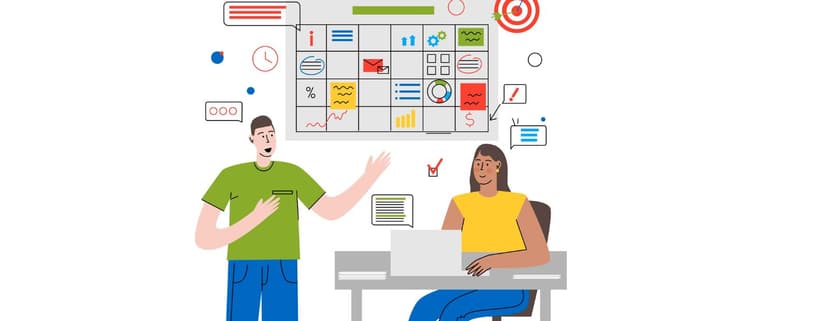We live in an era where everything needs some marketing. With the ever-growing standard of living, different product launches are happening worldwide. For your business to do great and outshine, marketing is required.
There can be different marketing strategies, but proximity marketing is the best way to market your business, as everyone is tech-savvy!
What is Proximity Marketing?
Proximity marketing is a tactic that allows marketers to target prospective audiences with advertising content based on their current location, irrespective of time and place. Bluetooth, QR codes and Barcodes, WiFi, BLE Beacons, geofencing, and NFCs facilitate proximity marketing.Proximity marketing is paving a new way of providing low-cost, real-time location-based marketing that is tailor-made for the customer.
Proximity marketing is a digital marketing strategy that drives your business to grow and flourish, by expanding and reinforcing customer engagement with your business.
Why is proximity marketing important?
- Proximity Marketing provides excellent business results in combination with the right advertising strategies and tools.
- It allows venues to communicate with visitors at the right place and time with highly relevant, personalized content on their mobile devices.
- Consumers have information at their fingertips to decrease the number of trips made to a store while increasing revenues for the retailer.
Set goals for proximity to market
Proximity marketing will be known to be successful only when a large number of people are visiting your business or spending money buying your products. While proximity marketing solutions are relatively easy to set up, success largely depends on setting reasonable goals and understanding the most effective proximity marketing devices to use. Without these, proximity-based marketing may not achieve its full potential. Your business can attract the right audience by defining clear objectives and selecting the technology that aligns best with your needs.
Businesses often struggle with marketing, particularly in creating high-quality, engaging content. Although every business today generates a steady stream of content, those that succeed invest in creating valuable, engaging, and unique material that resonates with their target market and stands out from the competition.
Instead of producing generic content, consider topics that will entertain, educate, or engage your target audience. To bring this content to life, leverage visual and multimedia elements such as pictures, videos, audio, infographics, animations, and other creative approaches that align with proximity-based marketing strategies.
Target audience
The main question that arises is, who is the targeted audience? Some of the audience is more responsive than others. For example, some people are impulsive shoppers, while a few plan and visit the store when required. Impulsive shoppers can be allured to your store by vibrant visuals and content. The planned audience can be drawn by using push notifications.
And some targeted audiences can be inaccessible with market proximity. Advertising campaigns change the minds of such audiences, and they will find reasons to sign up for your proximity marketing.
Divide your audience into groups
Strategically divide your audience into groups so you will have a clear idea of which group needs what marketing strategy. For example, some people will be willing to pay more per product, while others will look at discounted prices. These can make up two types of groups.
One kind of proximity marketing can be followed for the group willing to pay more. In contrast, audiences that prefer discounted prices can be enticed by providing offers and coupons that can be irresistible.
Create a plan for your content
Considering your business’s needs, you must plan your strategies for days, weeks, or months ahead.
- A short-term marketing plan is fantastic if your stock gets updated regularly and when you want to promote your new products to impulsive shoppers. This is the most demanding content plan and requires keen insight into customer behaviors.
- A mid-term marketing plan is the best way to set up things for product launches.
- A long-term marketing plan is for those crucial times of the year, such as festivals and the holiday season, when your business’s performance is maximized.
Types of Proximity Marketing technologies available
QR Codes And Barcodes
Once thought to be dead, QR codes have gotten a new life. They are scannable barcodes that are incredibly cheap and fast to implement. They redirect the audience to the particular website. These unique custom QR codes can be created with ease using QR code generators available online.
This solution is usually used at conferences, events, and restaurants to make payments. Since they are inexpensive, they are used to redirect the audience to download apps or get traffic to the business’s website during events and conferences.
Restaurants have started using them for digital menus, and they also use QR codes for payments. Many businesses have opted for QR codes for making payments as they are hassle-free and cashless. The ease of this strategy is relatively straightforward as it doesn’t require a lot of technology.
Geofencing
A geofence is a virtual circumference for a geographical area. A geofence is dynamically generated. The use of geofence is called geofencing
It uses technologies like Global Positioning System (GPS), WiFi, Radiofrequency Identification (RFID), and cellular data. A virtual boundary gets created around a geographic location as small-scale as a building, store, or mall and as substantial as a ZIP code, city, or entire state. A preprogrammed action is naturally triggered when a mobile phone or RFID tag enters or exits the geofence.
Geofencing can be used for location-based marketing and advertising. For example, when the targeted audience is near your store, they can receive a push message that can attract them with coupons and offers to your store. This is called targeted marketing action.
The drawback of GPS is that the audience has to have their locations turned on on their phones. It can’t be used inside as GPS is an "Outdoor Positioning System".
BLE Beacons
A beacon is a prominent device designed to attract attention to a specific location. Bluetooth beacons are small, wireless, high-tech devices that transmit continuous radio signals. BLE stands for Bluetooth Low Energy. BLE technology is used to enhance proximity marketing strategies.
For beacon marketing, intelligent devices with Bluetooth must be within the beacon range to pass the marketing strategy in text or image. But for this to happen, the targeted audience should have their Bluetooth switched on and should also have apps related to your business and necessary apps to receive push messages and notifications.
Bluetooths are Indoor Positioning Systems that can be configured to locate assets and people. Bluetooths are used inside closed spaces as they work well. An example of an Indoor Positioning System is Airfender.
Near-field Communications (NFCs)
NFC is a set of short ranged limited wireless technologies. They work at a distance of 4 cm or less to connect.An NFC tag lets you send small data loads to an android device. The android devices are now powered with NFC.
NFC tags now come with added QR codes, enabling all smartphones to tap and scan them to reveal the marketing campaign. NFCs are not that great in malls, as targeted audiences need to be in very close proximity. NFCs tags are great for businesses like gyms, where customers need to scan their tags to enter the gyms as such.
WiFi:
Wifi belongs to a family of wireless network protocols. They are commonly used for local area networking devices. These are the most used networks in the world. Wifi stands for Wireless Fidelity.
You can provide free wifi to your customers who come inside your store. The contact number and other details are collected when they log into your wifi. Using this information, you can send them marketing messages whenever they are nearby or personalized messages during festivities or celebrations.
How do Proximity sensors work?
After reading about the various technologies that can be used for Proximity Marketing, you might need clarification on how proximity sensor works.Proximity sensors detect the presence of nearby objects without any physical contact. Simply put, proximity sensors work by transmitting data about the motion of an object into an electrical signal.
Proximity sensors can be used in various environments and for many different applications. They are beneficial to any application where detecting an object in a defined range is necessary.
Promoting through Social Media marketing
It will help if you boost your social media marketing efforts through organized strategies that aim to increase engagement and visibility and convert your followers into paying customers.
These social media statistics prove the importance of social selling:
- 92% of marketers firmly admit that social media is crucial to their marketing strategy.
- More than 85% of marketers have observed increased exposure and visibility of their businesses through social media.
- 78% of marketers have disclosed increased traffic through social media.
Benefits of Proximity Marketing for business
There are several business benefits of using proximity advertising. For example, this type of location marketing lets you personalize the customer experience based on past, present, or future location and behavior. Since relevant marketing boosts your sales, this is useful.
Proximity also helps you to understand your customer’s needs, improving customer-business relationships. With proximity campaigns, you immediately connect with prospects when they are most in a situation to purchase from your brand. Proximity Marketing also helps you gain a competitive edge.
"However, there is a fine line between improving customer experiences and appearing creepy with too many disruptive messages. Ensure your marketing is not creeping out your audience, or they might avoid doing business with you".
An example of Proximity Marketing
The retail giant Amazon started a new convenience store in Seattle, US, in January 2018 – Amazon Go. It is a grab-and-go store that enables a shopping experience like no other. It has no check-out lines nor humans to guide you around.
This mini-market is packed with food and technology- computer vision, proximity sensors, and a large array of cameras.
- Beacons are a major part of the Amazon Go infrastructure.
- The customer has to download an app at the storefront.
- It connects to their Amazon account and sets up a payment method, which generates a QR code in the phone that can be scanned at the front of the store.
- The ceiling-mounted cameras and proximity sensors throughout the store track and charge automatically.
Conclusion
We hope you have enough information to convince you that proximity marketing is a great way to approach your customers in an innovative and targeted manner. Equipped with this knowledge, you can now choose the best technology for you and use it in various ways, depending on your business.
A large amount of success has already been achieved using proximity marketing. With the mobile device user population growing worldwide, proximity advertising has great potential to help your business reach more customers and grow foot traffic and revenue. Your business will bloom, and you will reap the fruits of success.






























